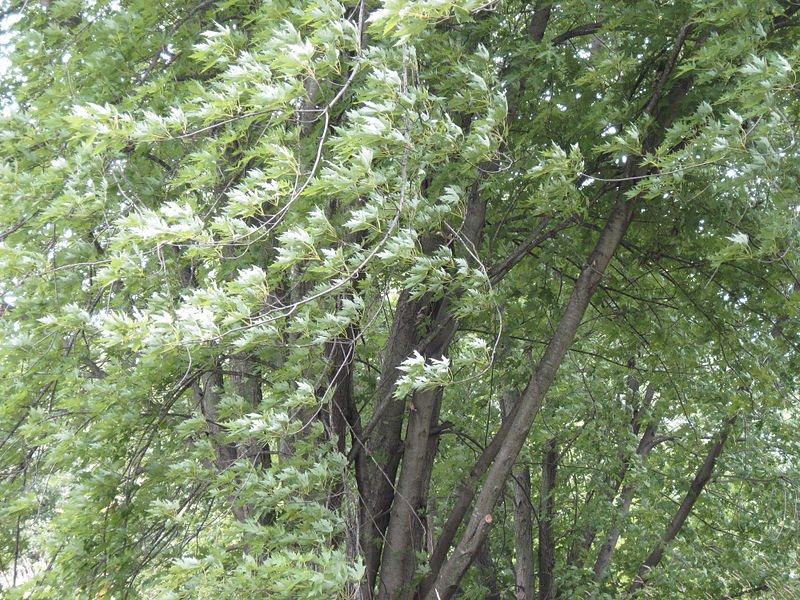Silver Maple : Overview
by Gwen Hanley
The silver maple, Acer saccharinum, gets its colloquial name from the pale green color of the undersides of its leaves. A silver maple with its leaves dancing in the wind is an unmistakable sight, and they are quite easy to identify. Because it is often found on riverbanks, Acer saccharinum is also known as the “water maple” or “river maple.” Native Americans used different parts of the trees for various purposes, making the sap into syrup and using the bark or leaves for various medicines. The wood is easily worked and good for furniture. In older silver maple trees, the heartwood displays a swirled pattern sold as “bird's eye maple.” Diversely useful, silver maples show potential for use as biofuels. In urban settings, they have been planted ornamentally, including in several locations on the UVM campus. However, they are no longer recommended for ornamental planting by the USDA because they often grow larger than anticipated and are susceptible to a variety of diseases.

